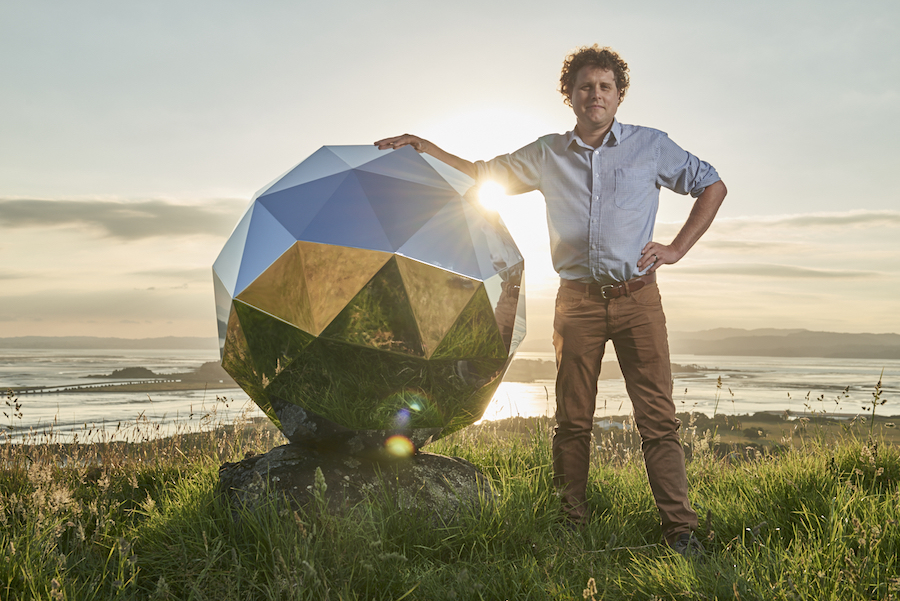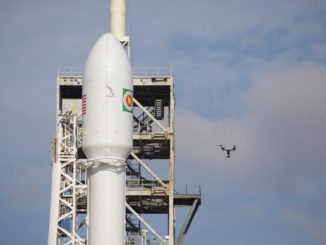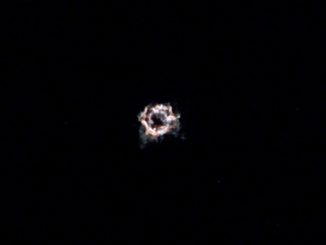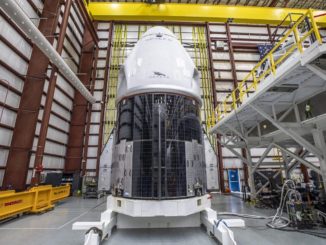
A propulsive kick stage designed to expand the performance envelope of Rocket Lab’s light-class Electron satellite launcher and a spacecraft that will grace nighttime skies for the next nine months flew into orbit on the company’s test flight earlier this month.
Built to provide small satellites a dedicated ride to space, the privately-developed Electron rocket reached orbit for the first time after lifting off from Rocket Lab’s base on the North Island of New Zealand on Jan. 20 (U.S. time; Jan. 21 New Zealand time).
Rocket Lab announced before the flight that the rocket would try to place three CubeSats in orbit — two for Spire Global’s commercial weather data and ship tracking network, and one for Planet’s Earth-imaging satellite fleet.
The company confirmed the successful deployment of the three CubeSats immediately after the launch, marking the Electron’s first fully successful flight after a maiden test launch in May 2017 fell short of orbit.
But Rocket Lab kept secret two other craft riding atop the launch vehicle until the U.S.-New Zealand company announced their presence on the mission in separate statements released Jan. 23 and Jan. 24.
While the Planet-owned “Dove Pioneer” CubeSat released from the Electron’s second stage in a preliminary orbit with low and high altitudes of around 179 miles (289 kilometers) and 331 miles (533 kilometers), an additional kick stage engine separated and coasted through space for 40 minutes before igniting to place the two Spire Lemur-2 nanosatellites into a nearly circular orbit 310 miles (500 kilometers) above Earth.
Powered by Rocket Lab’s new Curie restartable engine, the kick stage burns a non-toxic “green” monopropellant. A company spokesperson said details about the make-up of the propellant are “commercially sensitive.”
The lower two stages of the Electron rocket consume a mix of kerosene and liquid oxygen propellants.
Rocket Lab said the kick stage allows future Electron flights to place multiple satellites into different orbits, using the Curie engine’s reignition capability to adjust inclination and altitude.
That will benefit customers flying different types of payloads on future Electron missions, which can maneuver to different orbits to drop off each satellite group.
“Until now many small satellite operators have had to compromise on optimal orbits in order to reach space at an accessible cost,” said Peter Beck, Rocket Lab’s founder and CEO. “The kick stage releases small satellites from the constricting parameters of primary payload orbits and enables them to fully reach their potential, including faster deployment of small satellite constellations and better positioning for Earth imaging.”
The kick stage has its own cold gas reaction control system for pointing, along with on-board avionics, power and communications systems, according to Rocket Lab.
While the kick stage remained in orbit after completing its job earlier this month, Rocket Lab said future Electron kick stages will de-orbit themselves after releasing their payloads, helping prevent the spread of space debris.

With the announcement of the kick stage, Rocket Lab had disclosed five items that should have been left in orbit by the Electron rocket. But ground-based military tracking radars found one more object.
The company revealed its identity Jan. 24, a meter-wide (3-foot) geodesic sphere covered in mirrors that Rocket Lab says will catch beams of sunlight and reflect them down to Earth.
Named the Humanity Star, the satellite has a carbon fiber structure, similar to the composite frame of Rocket Lab’s Electron rocket. Sixty-five highly reflective panels were installed around the spherical structure.
Rocket Lab said in a statement that the Humanity Star is “expected to become the brightest object in the night sky, creating a shared experience for all humanity.”
“No matter where you are in the world, or what is happening in your life, everyone will be able to see the Humanity Star in the night sky. My hope is that all those looking up at it will look past it to the vast expanse of the universe and think a little differently about their lives, actions and what is important for humanity,” said Beck in a statement.
Beck created the project, and a copy of the Humanity Star was stowed aboard the first Electron launch last year, but it fell back to Earth before reaching orbit.
Rocket Lab said the satellite, which was deployed in the initial elliptical orbit achieved by the Electron rocket, should remain in space for approximately nine months. The tenuous forces of aerodynamic drag at orbital altitude will eventually drag it back into the atmosphere, where it will burn up during re-entry.
The Humanity Star is designed to spin rapidly, shining glints sunlight down to observers on the ground at dawn or dusk. From a skywatcher’s perspective, the Humanity Star should appear as a bright flashing object traversing the sky.
The exact brightness, or magnitude, of the Humanity Star is still to be determined.
The concept of of a reflective “disco ball” satellite is not new. Three Starshine satellites, also covered in mirrors, launched from 1999 through 2001 after their assembly by the Naval Research Laboratory, NASA and a consortium of students.
Rocket Lab placed the Humanity Star satellite, and its co-passengers, into an orbit tilted around 82.9 degrees to the equator. That means the spacecraft will pass over all populated parts of the planet.
But the best viewing opportunities in the United States are not expected until March, the company said.
Readers interested in seeing the Humanity Star in the sky can track the craft on the mission’s official website, or on HeavensAbove.com, a popular resource for satellite viewing.
Email the author.
Follow Stephen Clark on Twitter: @StephenClark1.



